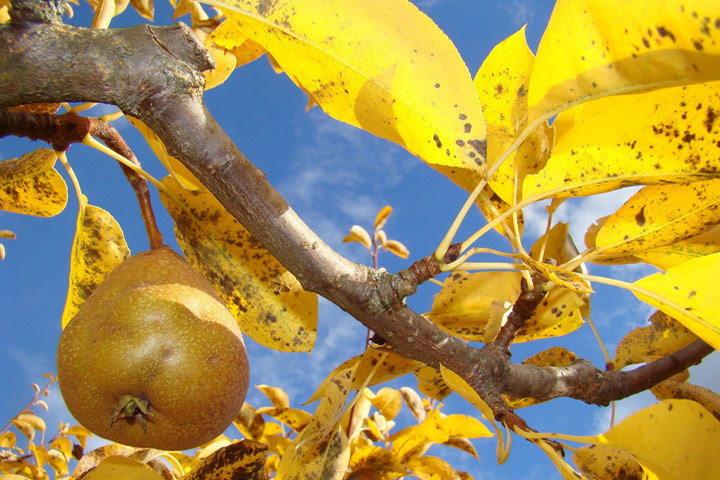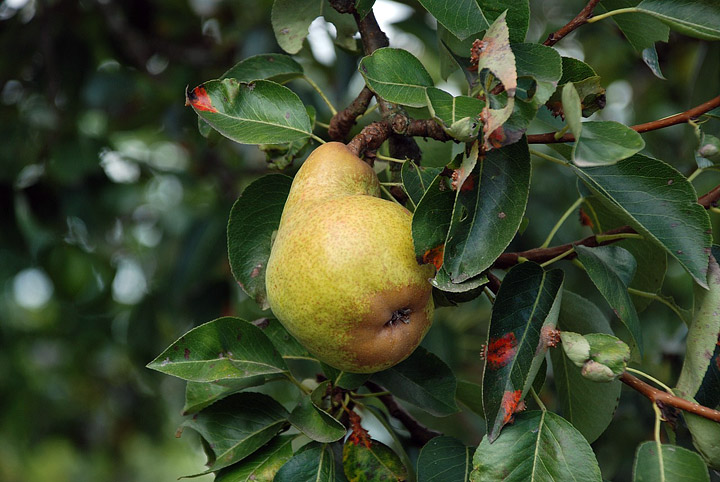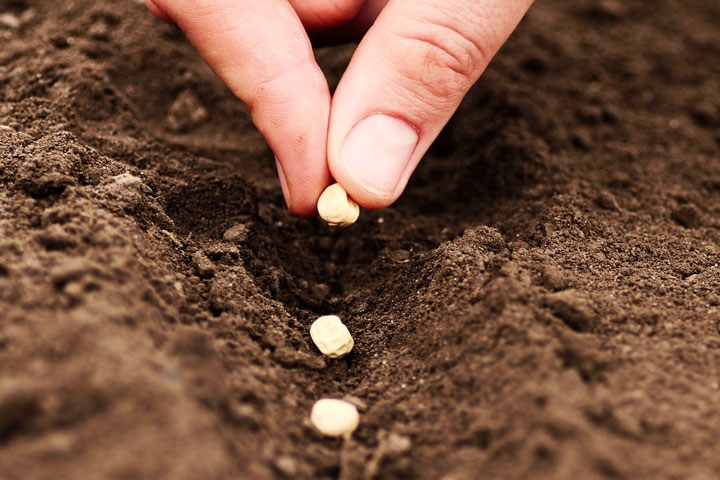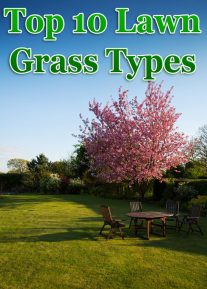
Home gardeners can grow high-quality pear varieties available that aren’t available in grocery stores, making pear trees a good choice for the home orchard.
About Pears
Pears can usually be grown wherever apples are successful, though they are somewhat less resistant than apples to extremes of heat and cold. Pears, however, need less attention than apples in matters of pruning and insect control and are more tolerant of moist soil conditions.
Choose fire blight-resistant varieties and rootstocks, especially in areas outside dry western regions. Most varieties will start to bear significant harvests after 5 to 6 years. Plant at least two different, but compatible, varieties for cross-pollination.
Site Selection
Choose a site with full sun, moderate fertility, and good air circulation and water drainage. Pears will do well in a wide range of soil types.
Planting Instructions
Set bare-root trees atop a small mound of soil in the center of the planting hole, and spread the roots down and away without unduly bending them. Identify original planting depth by finding color change from dark to light as you move down the trunk towards the roots. If the tree is grafted, position the inside of the curve of the graft union away from the afternoon sun. For container-grown trees, remove the plant from its pot and eliminate circling roots by laying the root ball on its side and cutting through the roots with shears. Don’t cover the top of the root-ball with backfill because it could prevent water from entering. Space standard-size trees 20 to 25 feet apart; space dwarf trees 12 to 15 feet apart.
Care
Pears do best with a small amount of fertilizer early in the year. Heavy doses of nitrogen will make the tree more vulnerable to fire blight. Use limb spreaders to encourage horizontal branching and earlier fruiting spurs. Pears are susceptible to a number of different disease and insect pests, depending on region. Contact your Cooperative Extension office for information on managing pests in your area.
Harvesting
Pears should be harvested when they are mature, but still hard, and ripened off the tree for the best eating and canning quality. If you’re going to keep some pears in cool storage for eating a month or two in the future, pick them when they are full size but still quite hard. Even though the skin is firm, handle them gently; they bruise easily.




Leave a Reply